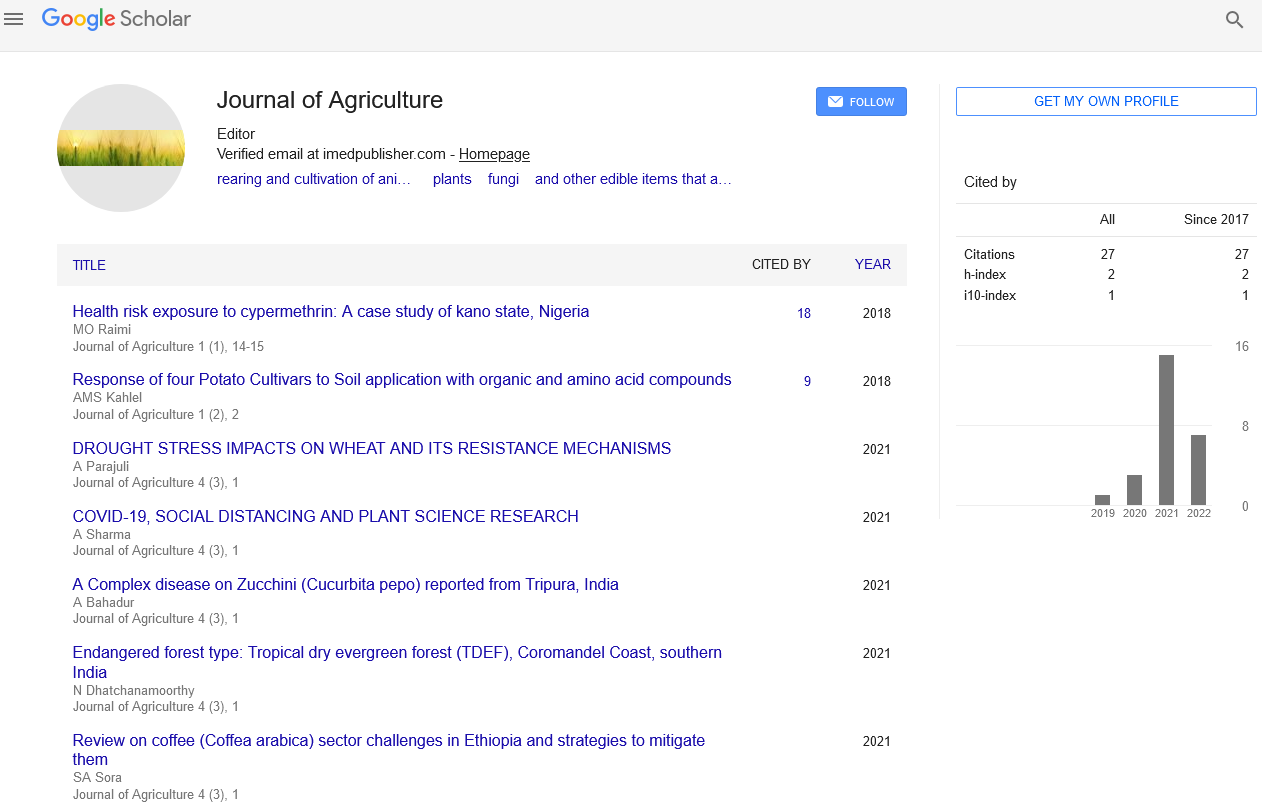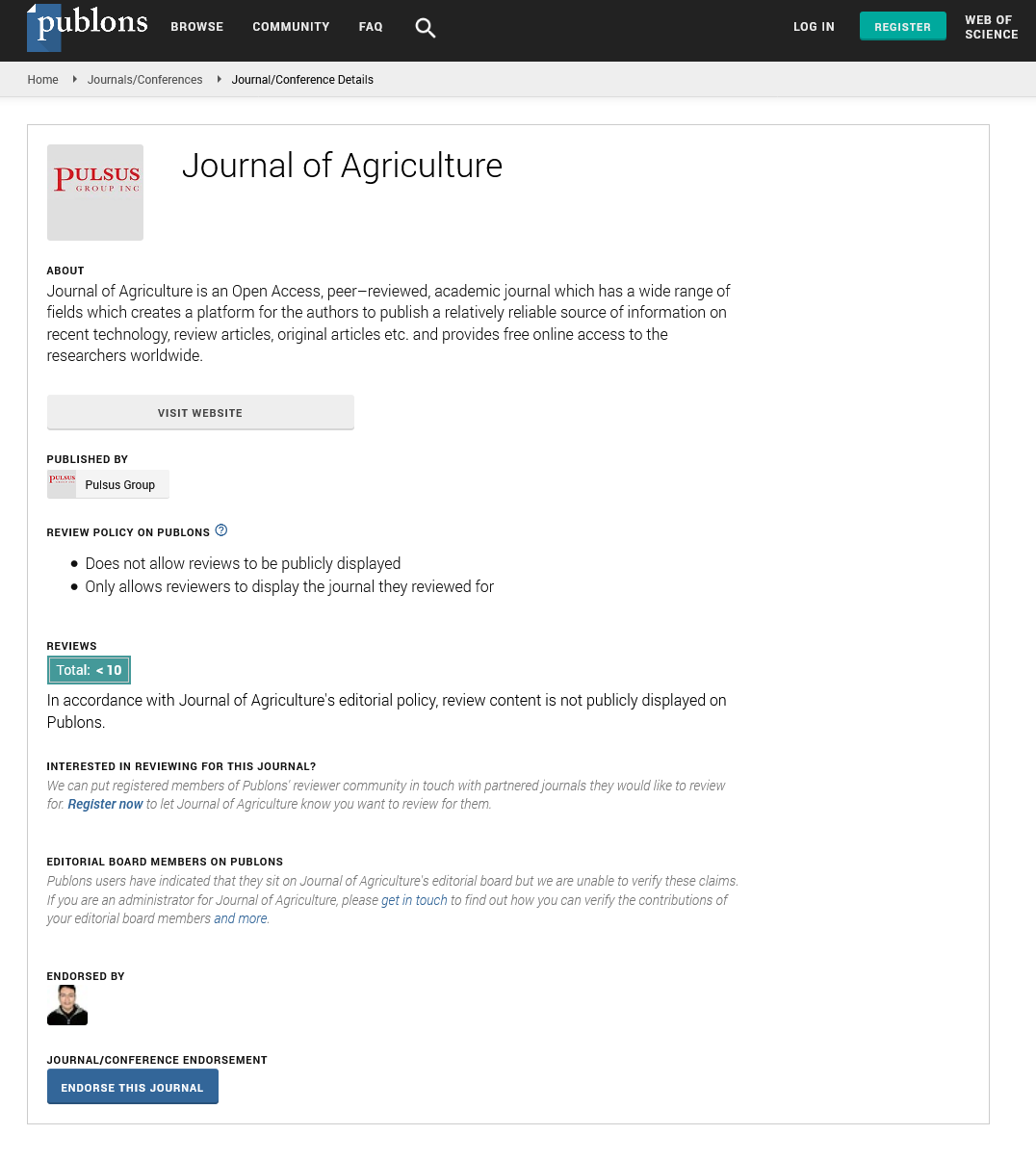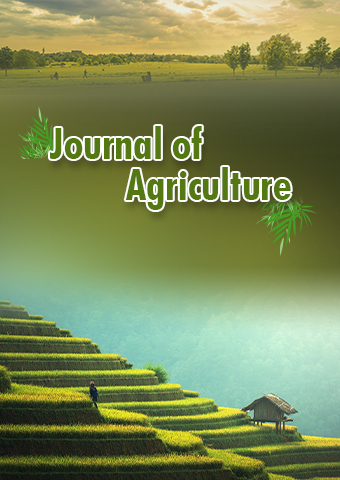Mini Review - Journal of Agriculture (2023) Volume 6, Issue 3
A quantitative investigation of the potential effects of the Ukraine-Russia military conflict on world wheat food security
Santana Gosh*
Department of Economics and Management, Xinjiang Agricultural University, China
Department of Economics and Management, Xinjiang Agricultural University, China
E-mail: Gsantanu97@gmail.com
Received: 31-May-2023, Manuscript No. jagri-23-102485; Editor assigned: 02-Jun-2023, Pre-QC No. jagri-23-102485 (PQ); Reviewed: 16- Jun-2023, QC No. jagri-23-102485; Revised: 21-Jun-2023, Manuscript No. jagri-23-102485 (R); Published: 28-Jun-2023, DOI: 10.37532/ jagri.2023.6(3).64-66
Abstract
Food security is a fundamental global concern that encompasses the availability, accessibility, and utilization of safe and nutritious food for all individuals, ensuring their physical and economic well-being. In a world grappling with a growing population, climate change, limited natural resources, and social inequalities, achieving and maintaining food security has become increasingly challenging.an overview of the multifaceted dimensions of food security, highlighting key factors that influence its attainment. It explores the complex interplay between agricultural production, trade, economic stability, environmental sustainability, and social equity as critical components of ensuring food security at the global, national, and local levels. The significance of sustainable agricultural practices. It discusses the importance of enhancing productivity while minimizing environmental impact through innovative technologies, responsible land management, and resilient farming systems. Emphasizing the need for diverse and resilient crop varieties, it highlights the role of genetic diversity and sustainable farming techniques in mitigating risks posed by climate change and other agricultural challenges. The abstract addresses the significance of trade and policy frameworks in achieving food security. It emphasizes the importance of fair trade agreements, reducing trade barriers, and promoting sustainable and responsible practices in global food systems. It also underscores the need for coherent policies that address the social, economic, and environmental dimensions of food security, fostering integrated approaches across sectors such as agriculture, health, education, and social welfare. The significance of international collaboration and partnerships in addressing global food security challenges. It emphasizes the need for collective action, knowledge sharing, and technology transfer to support developing countries in building resilient and sustainable food systems. It also recognizes the importance of research, innovation, and capacity building to address emerging issues and develop context-specific solutions. Achieving food security requires a comprehensive and integrated approach that encompasses sustainable agricultural practices, equitable food systems, supportive policies, nutrition-sensitive approaches, and international cooperation. Addressing food security challenges requires proactive measures at multiple levels to ensure a sustainable and resilient future where no individual goes hungry, and all have access to safe, nutritious, and culturally appropriate food.
Keywords
Food security • Natural resources • Sustainable agriculture • Genetic diversity
Introduction
Food security is a fundamental human right and a critical component of sustainable development. It refers to the availability, accessibility, and affordability of nutritious food for all individuals, ensuring their physical and economic well-being. Despite significant progress in agricultural productivity and technological advancements, food insecurity remains a pressing global challenge [1]. This article examines the complexities of food security, its underlying causes, and the measures being taken to address this crucial issue.
Understanding food security
Food security encompasses four essential dimensions: availability, access, utilization, and stability.
Availability: Sufficient quantities of food must be produced to meet the demand of a growing global population. This requires sustainable agricultural practices, adequate natural resources, and investment in research and development [2].
Access: All individuals should have physical and economic access to food. Factors such as income levels, infrastructure, transportation, and market systems play crucial roles in ensuring equitable distribution [3].
Utilization: Access to food alone is insufficient; it must also be nutritionally adequate and safe for consumption. Promoting balanced diets, proper food processing, and adequate sanitation are essential for optimal utilization [4].
Stability: Food security necessitates consistent access to food over time, regardless of shocks or disruptions such as natural disasters, conflicts, or economic crises. Building resilience in agricultural systems and social safety nets is critical [5].
Causes of food insecurity
Poverty: Poverty is a significant underlying cause of food insecurity. Limited financial resources prevent individuals from accessing an adequate and nutritious diet.
Climate change: Increasingly unpredictable weather patterns, rising temperatures, and extreme events pose challenges to agricultural production. Climate change impacts crop yields, water availability, and the overall stability of food systems [6].
Conflict and displacement: Areas affected by conflict and mass displacement face severe disruptions to food production, distribution, and access. These crises lead to heightened vulnerability and food insecurity among affected populations [7].
Inefficient agricultural practices: Outdated farming techniques, lack of infrastructure, limited access to technology, and poor land management practices can hamper agricultural productivity and compromise food security.
Addressing food security
Sustainable agricultural practices: Promoting sustainable and climate-resilient agricultural practices, such as agroforestry, organic farming, and precision agriculture, can enhance productivity while minimizing environmental impact [8].
Social safety nets
Implementing social safety nets, including cash transfers, food vouchers, and school feeding programs, can help alleviate immediate food insecurity and support vulnerable populations.
Enhancing infrastructure: Investment in rural infrastructure, including transportation networks, irrigation systems, and storage facilities, improves market access and reduces post-harvest losses [9].
Research and development: Continued investment in research and development is vital for improving crop varieties, enhancing agricultural techniques, and addressing emerging challenges such as climate change and pests.
International cooperation: Collaborative efforts among governments, international organizations, and civil society are crucial for sharing knowledge, coordinating policies, and providing assistance to countries facing food security challenges [10].
Conclusion
Achieving global food security requires a multi-faceted approach that addresses the underlying causes of food insecurity. It demands sustainable agricultural practices, social protection programs, investment in infrastructure, and international cooperation. As we move forward, it is essential to prioritize the needs of the most vulnerable populations and ensure that food security remains at the forefront of global agendas. By working together, we can build a future where no individual goes to bed hungry, and everyone has access to safe, nutritious, and affordable food.
References
- Bergmann EJ, Raupp MJ. Efficacies of Common Ready to Use Insecticides AgainstHalyomorpha halys(Hemiptera: Pentatomidae). Florida Entomol. 97(2), 791-800 (2014).
- Isman MB. Botanical insecticides: for richer, for poorer. Pest Manag Sci. 64(1), 8-11 (2008).
- Pukkala E. Occupation and cancer - follow-up of 15 million people in five Nordic countries. Acta Oncol. 48, 646-790 (2009).
- Wingren G, Fredrikson M, Brage HN et al. Soft tissue sarcoma and occupational exposures. Cancer. 66, 806-811 (1990).
- Beccuti G, Monagheddu C, Evangelista A et al. Timing of food intake: Sounding the alarm about metabolic impairments? A systematic review. Pharmacological Research. 125, 132–141 (2017).
- Beccuti G, Monagheddu C, Evangelista A et al. Timing of food intake: Sounding the alarm about metabolic impairments? A systematic review. Pharmacological Research. 125, 132–141 (2017).
- Johnson KJ, Carozza SE, Chow EJ et al. Parental age and risk of childhood cancer: a pooled analysis. Epidemiology. 20, 475-483 (2009).
- Woods JS, Polissar L, Severson RK et al. Soft tissue sarcoma and non-Hodgkin's lymphoma in relation to phenoxyherbicide and chlorinated phenol exposure in western Washington. J Natl Cancer Inst. 78, 899-910 (1987).
- Booth FW, Chakravarthy MV. Physical activity and dietary intervention for chronic diseases: a quick fix after all. J Appl Physiol. 100, 1439-40 (2006).
- Anderson JW, Ward K. High-carbohydrate, high-fiber diets for insulin-treated men with diabetes mellitus. Am J Clin Nutr. 32, 2312-21 (1979).
Indexed at, Google Scholar, Crossref
Indexed at, Crossref, Google Scholar
Indexed at, Crossref, Google Scholar
Indexed at, Google Scholar, Crossref
Indexed at, Google Scholar, Crossref
Indexed at, Crossref, Google Scholar
Indexed at, Crossref, Google Scholar
Indexed at, Google Scholar, Crossref


